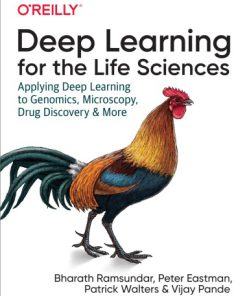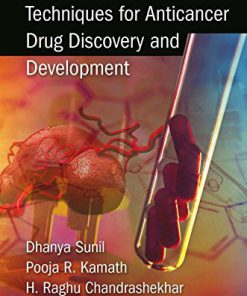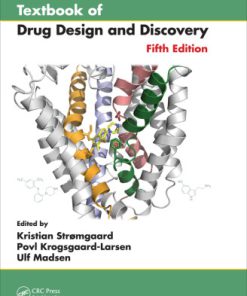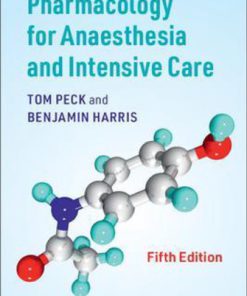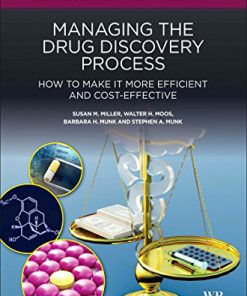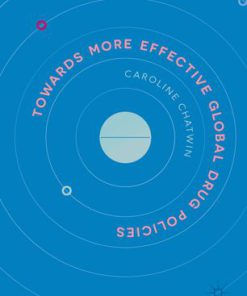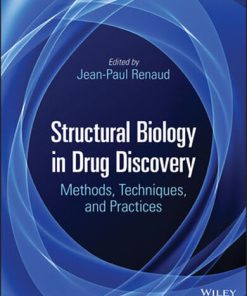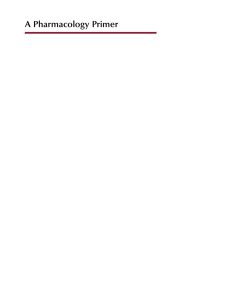A Pharmacology Primer Techniques for More Effective and Strategic Drug Discovery 5th Edition by Terry Kenakin 0128139587 9780128139585
$50.00 Original price was: $50.00.$25.00Current price is: $25.00.
A Pharmacology Primer Techniques for More Effective and Strategic Drug Discovery 5th Edition by Terry Kenakin – Ebook PDF Instant Download/DeliveryISBN: 0128139587, 9780128139585
Full download A Pharmacology Primer Techniques for More Effective and Strategic Drug Discovery 5th Edition after payment.
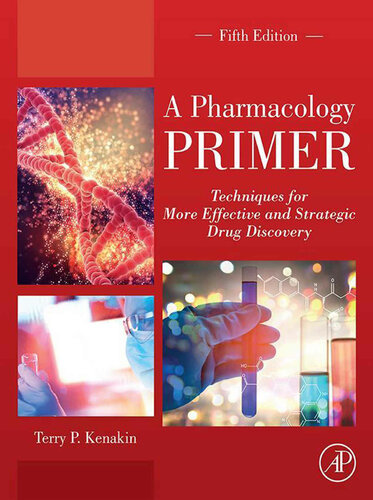
Product details:
ISBN-10 : 0128139587
ISBN-13 : 9780128139585
Author: Terry Kenakin
A Pharmacology Primer: Techniques for More Effective and Strategic Drug Discovery, Fifth Edition features the latest ideas and research regarding the application of pharmacology to the process of drug discovery. Written by well-respected pharmacologist, Terry P. Kenakin, this primer is an indispensable resource for all those involved in drug discovery. This updated edition has been thoroughly revised to include material on quantifying drug efficacy through bias and cluster analysis, the impact of molecular dynamics and protein structural analysis, the real time kinetic analysis of drug effect, virtual screening for new drug chemical scaffolds, and much more.
With full color illustrations and new examples throughout, this book remains a top reference for all industry and academic scientists that is also ideal for students directly involved in drug discovery or pharmacologic research.
A Pharmacology Primer Techniques for More Effective and Strategic Drug Discovery 5th Table of contents:
1 What is Pharmacology?
1.1 About This Book
1.2 What is Pharmacology?
1.3 The Receptor Concept
1.4 Pharmacological Test Systems
1.5 The Nature of Drug Receptors
1.6 Pharmacological Intervention and the Therapeutic Landscape
1.7 System-Independent Drug Parameters: Affinity and Efficacy
1.8 What is Affinity?
1.9 The Langmuir Adsorption Isotherm
1.10 What is Efficacy?
1.11 Dose–Response Curves
1.11.1 Potency and Maximal Response
1.11.2 P-Scales and the Representation of Potency
1.12 Chapter Summary and Conclusions
1.13 Derivations: Conformational Selection as a Mechanism of Efficacy
References
2 How Different Tissues Process Drug Response
2.1 Drug Response as Seen Through the “Cellular Veil”
2.2 The Biochemical Nature of Stimulus–Response Cascades
2.3 The Mathematical Approximation of Stimulus–Response Mechanisms
2.4 Influence of Stimulus–Response Cascades on Dose–Response Curve Slopes
2.5 System Effects on Agonist Response: Full and Partial Agonists
2.6 Differential Cellular Response to Receptor Stimulus
2.6.1 Choice of Response Pathway
2.6.2 Augmentation or Modulation of Stimulus Pathway
2.6.3 Differences in Receptor Density
2.6.4 Target-Mediated Trafficking of Stimulus
2.7 Receptor Desensitization and Tachyphylaxis
2.8 The Measurement of Drug Activity
2.9 Advantages and Disadvantages of Different Assay Formats
2.10 Drug Concentration as an Independent Variable
2.10.1 Dissimulation in Drug Concentration
2.10.2 Free Concentration of Drug
2.11 Chapter Summary and Conclusions
2.12 Derivations
2.12.1 Series Hyperbolae Can Be Modeled by a Single Hyperbolic Function
2.12.2 Successive Rectangular Hyperbolic Equations Necessarily Lead to Amplification
2.12.3 Saturation of Any Step in a Stimulus Cascade by Two Agonists Leads to Identical Maximal Final
2.12.4 Procedure to Measure Free Drug Concentration in the Receptor Compartment
References
Further Reading
3 Drug–Receptor Theory
3.1 About This Chapter
3.2 Drug–Receptor Theory
3.3 The Use of Mathematical Models in Pharmacology
3.4 Some Specific Uses of Models in Pharmacology
3.5 Classical Model of Receptor Function
3.6 The Operational Model of Receptor Function
3.7 Two-State Theory
3.8 The Ternary Complex Model
3.9 The Extended Ternary Complex Model
3.10 Constitutive Receptor Activity and Inverse Agonism
3.11 The Cubic Ternary Complex Model
3.12 Multistate Receptor Models and Probabilistic Theory
3.13 Chapter Summary and Conclusions
3.14 Derivations
3.14.1 Radioligand Binding to Receptor Dimers Demonstrating Cooperative Behavior
3.14.2 Effect of Variation in an HIV-1 Binding Model
3.14.3 Derivation of the Operational Model
3.14.4 Operational Model Forcing Function for Variable Slope
3.14.5 Derivation of Two-State Theory
3.14.6 Derivation of the Extended Ternary Complex Model
3.14.7 Dependence of Constitutive Activity on Receptor Density
3.14.8 Derivation of the Cubic Ternary Complex Model
References
4 Pharmacological Assay Formats: Binding
4.1 The Structure of This Chapter
4.2 Binding Theory and Experiment
4.2.1 Saturation Binding
4.2.2 Displacement Binding
4.2.3 Kinetic Binding Studies
4.3 Complex Binding Phenomena: Agonist Affinity from Binding Curves
4.4 Experimental Prerequisites for Correct Application of Binding Techniques
4.4.1 The Effect of Protein Concentration on Binding Curves
4.4.2 The Importance of Equilibration Time for Equilibrium Between Two Ligands
4.5 Binding in Allosteric Systems
4.6 Chapter Summary and Conclusions
4.7 Derivations
4.7.1 Displacement Binding: Competitive Interaction
4.7.2 Displacement Binding: Noncompetitive Interaction
4.7.3 Displacement of a Radioligand by an Allosteric Antagonist
4.7.4 Relationship Between IC50 and KI for Competitive Antagonists
4.7.5 Maximal Inhibition of Binding by an Allosteric Antagonist
4.7.6 Relationship Between IC50 and KI for Allosteric Antagonists
4.7.7 Two-Stage Binding Reactions
4.7.8 Effect of G-Protein Coupling on Observed Agonist Affinity
4.7.9 Effect of Excess Receptor in Binding Experiments: Saturation Binding Curve
4.7.10 Effect of Excess Receptor in Binding Experiments: Displacement Experiments
4.7.11 Derivation of an Allosteric Binding Model
References
5 Agonists: The Measurement of Affinity and Efficacy in Functional Assays
5.1 Functional Pharmacological Experiments
5.2 The Choice of Functional Assays
5.3 Recombinant Functional Systems
5.4 Functional Experiments: Dissimulation in Time
5.5 Experiments in Real Time Versus Stop-Time
5.6 Quantifying Agonism: The Black–Leff Operational Model of Agonism
5.6.1 Affinity-Dependent versus Efficacy-Dependent Agonist Potency
5.6.2 Secondary and Tertiary Testing of Agonists
5.7 Biased Signaling
5.7.1 Receptor Selectivity
5.8 Null Analyses of Agonism
5.8.1 Partial Agonists
5.8.2 Full Agonists
5.9 Comparing Full and Partial Agonist Activities: Log(max/EC50)
5.10 Chapter Summary and Conclusions
5.11 Derivations
5.11.1 Relationship Between the EC50 and Affinity of Agonists
5.11.2 Method of Barlow, Scott, and Stephenson for Affinity of Partial Agonists
5.11.3 Maximal Response of a Partial Agonist Is Dependent on Efficacy
5.11.4 System Independence of Full Agonist Potency Ratios
5.11.5 Measurement of Agonist Affinity: Method of Furchgott
5.11.6 Agonism as a Positive Allosteric Modulation of Receptor-Signaling Protein Interaction to Deri
References
6 Orthosteric Drug Antagonism
6.1 Introduction
6.2 Kinetics of Drug–Receptor Interaction
6.3 Surmountable Competitive Antagonism
6.3.1 Schild Analysis
6.3.2 Patterns of Dose–Response Curves That Preclude Schild Analysis
6.3.3 Best Practice for the Use of Schild Analysis
6.3.4 Analyses for Inverse Agonists in Constitutively Active Receptor Systems
6.3.5 Analyses for Partial Agonists
6.3.6 The Method of Lew and Angus: Nonlinear Regression Analysis
6.4 Noncompetitive Antagonism
6.5 Agonist–Antagonist Hemiequilibria
6.6 Resultant Analysis
6.7 Antagonist Receptor Coverage: Kinetics of Dissociation
6.7.1 Estimating Antagonist Dissociation with Hemiequilibria
6.8 Blockade of Indirectly Acting Agonists
6.9 Irreversible Antagonism
6.10 Chemical Antagonism
6.11 Chapter Summary and Conclusions
6.12 Derivations
6.12.1 Derivation of the Gaddum Equation for Competitive Antagonism
6.12.2 Derivation of the Gaddum Equation for Noncompetitive Antagonism
6.12.3 Derivation of the Schild Equation
6.12.4 Functional Effects of an Inverse Agonist with the Operational Model
6.12.5 pA2 Measurement for Inverse Agonists
6.12.6 Functional Effects of a Partial Agonist with the Operational Model
6.12.7 pA2 Measurements for Partial Agonists
6.12.8 Method of Stephenson for Partial Agonist Affinity Measurement
6.12.9 Derivation of the Method of Gaddum for Noncompetitive Antagonism
6.12.10 Relationship of pA2 and pKB for Insurmountable Orthosteric Antagonism
6.12.11 Resultant Analysis
6.12.12 Blockade of Indirectly Acting Agonists
6.12.13 Chemical Antagonism: Abstraction of Agonist Concentration
6.12.14 Chemical Antagonism: Abstraction of Antagonist Concentration
References
7 Allosteric Modulation
7.1 Introduction
7.2 The Nature of Receptor Allosterism
7.3 Unique Effects of Allosteric Modulators
7.4 Functional Study of Allosteric Modulators
7.4.1 Phenotypic Allosteric Modulation Profiles
7.4.2 Allosteric Agonism
7.4.3 Affinity of Allosteric Modulators
7.4.4 Negative Allosteric Modulators
7.4.5 Positive Allosteric Modulators
7.4.6 Quantifying PAM Activity In Vivo
7.4.7 NAM/PAM Induced Agonist Bias
7.4.8 Optimal Assays for Allosteric Function
7.5 Methods for Detecting Allosterism
7.6 Chapter Summary and Conclusions
7.7 Derivations
7.7.1 Allosteric Model of Receptor Activity
7.7.2 Effects of Allosteric Ligands on Response: Changing Efficacy
7.7.3 Schild Analysis for Allosteric Antagonists
7.7.4 Application of Log(Max/R50) Values From R50 Curves to Quantify the Effects of PAMs
7.7.5 Quantifying Allosterically Mediated Induced Bias in Agonism
References
8 The Optimal Design of Pharmacological Experiments
8.1 Introduction
8.2 The Optimal Design of Pharmacological Experiments
8.2.1 Drug Efficacy
8.2.2 Affinity
8.2.3 Orthosteric vs Allosteric Mechanisms
8.2.4 Target Coverage In Vivo
8.3 Null Experiments and Fitting Data to Models
8.4 Interpretation of Experimental Data
8.5 Predicting Therapeutic Activity in All Systems
8.5.1 Predicting Agonism
8.5.2 Predicting Binding
8.5.3 Kinetics of Target Coverage
8.5.4 Drug Combinations In Vivo
8.6 Summary and Conclusions
8.7 Derivations
8.7.1 IC50 Correction Factors: Competitive Antagonists
8.7.2 Relationship of pA2 and pKB for Insurmountable Orthosteric Antagonism
8.7.3 Relationship of pA2 and pKB for Insurmountable Allosteric Antagonism
References
Further Reading
9 Pharmacokinetics
9.1 Introduction
9.2 Biopharmaceutics
9.3 The Chemistry of “Druglike” Character
9.4 Pharmacokinetics
9.4.1 Drug Absorption
9.4.2 Route of Drug Administration
9.4.3 General Pharmacokinetics
9.4.4 Metabolism
9.4.5 Clearance
9.4.6 Volume of Distribution and Half-Life
9.4.7 Renal Clearance
9.4.8 Bioavailability
9.5 Nonlinear Pharmacokinetics
9.6 Multiple Dosing
9.7 Modifying Pharmacokinetics Through Medicinal Chemistry
9.8 Practical Pharmacokinetics
9.8.1 Allometric Scaling
9.9 Placement of Pharmacokinetic Assays in Discovery and Development
9.10 Summary and Conclusions
References
10 Safety Pharmacology
10.1 Safety Pharmacology
10.2 Hepatotoxicity
10.2.1 Drug-Drug Interactions
10.2.2 Direct Hepatotoxicity
10.2.3 Hepatotoxicity in Context in vivo
10.3 Cytotoxicity
10.4 Mutagenicity
10.5 hERG Activity and Torsades De Pointes
10.6 Autonomic Receptor Profiling and Off-Target Effects
10.7 General Pharmacology
10.8 Clinical Testing and Drug Toxicity
10.9 Summary and Conclusions
References
11 The Drug Discovery Process
11.1 Some Challenges for Modern Drug Discovery
11.2 Target-Based Drug Discovery
11.2.1 Target Validation and the Use of Chemical Tools
11.2.2 Recombinant Systems
11.2.3 Defining Biological Targets
11.3 Systems-Based Drug Discovery
11.3.1 Assays in Context
11.4 In Vivo Systems, Biomarkers, and Clinical Feedback
11.5 Types of Therapeutically Active Ligands: Polypharmacology
11.6 Pharmacology in Drug Discovery
11.7 Chemical Sources for Potential Drugs
11.8 Pharmacodynamics and High-Throughput Screening
11.8.1 Structure Based Drug Design and Virtual Screening
11.9 Clinical Testing
11.10 Summary and Conclusions
References
12 Statistics and Experimental Design
12.1 Structure of This Chapter
12.2 Introduction
12.3 Descriptive Statistics: Comparing Sample Data
12.3.1 Gaussian Distribution
12.3.2 Populations and Samples
12.3.3 Confidence Intervals
12.3.4 Paired Data Sets
12.3.5 One-Way Analysis of Variance
12.3.6 Two-Way Analysis of Variance
12.3.7 Regression and Correlation
12.3.8 Detection of Single Versus Multiple Populations
12.4 How Consistent is Experimental Data with Models?
12.4.1 Comparison of Data to Models: Choice of Model
12.4.2 Curve Fitting: Good Practice
12.4.3 Outliers and Weighting Data Points
12.4.4 Overextrapolation of Data
12.4.5 Hypothesis Testing: Examples with Dose–Response Curves
12.4.6 One Curve or Two? Detection of Differences in Curves
12.4.7 Asymmetrical Dose–Response Curves
12.4.8 Comparison of Data to Linear Models
12.4.9 Is a Given Regression Linear?
12.4.10 One or More Regression Lines? Analysis of Covariance
12.5 Comparison of Samples to “Standard Values”
12.5.1 Comparison of Means by Two Methods or in Two Systems
12.5.2 Comparing Assays/Methods with a Range of Ligands
12.6 Experimental Design and Quality Control
12.6.1 Detection of Difference in Samples
12.6.2 Power Analysis
12.7 Chapter Summary and Conclusions
References
13 Selected Pharmacological Methods
13.1 Binding Experiments
13.1.1 Saturation Binding
13.1.2 Displacement Binding
13.2 Functional Assays
13.2.1 Determination of Equiactive Concentrations on Dose–Response Curves
13.2.2 Method of Barlow, Scott, and Stephenson for Measurement of the Affinity of a Partial Agonist
13.2.3 Method of Furchgott for the Measurement of the Affinity of a Full Agonist
13.2.4 Schild Analysis for the Measurement of Competitive Antagonist Affinity
13.2.5 Method of Stephenson for Measurement of Partial Agonist Affinity
13.2.6 Method of Gaddum for Measurement of Noncompetitive Antagonist Affinity
13.2.7 Method for Estimating Affinity of Insurmountable Antagonist (Dextral Displacement Observed)
13.2.8 Resultant Analysis for Measurement of Affinity of Competitive Antagonists With Multiple Prope
13.2.9 Measurement of the Affinity and Maximal Allosteric Constant for Allosteric Modulators Produci
13.2.10 Method for Estimating Affinity of Insurmountable Antagonist (No Dextral Displacement Observe
13.2.11 Measurement of pKB for Competitive Antagonists From a pIC50
13.2.12 Statistical Assessment of Selectivity
13.2.13 Measurement of Surmountable Allosteric Antagonism
13.2.14 Measurement of Insurmountable Allosteric Antagonism (Second Method)
13.2.15 Measurement of PAM Activity
Reference
14 Exercises in Pharmacodynamics and Pharmacokinetics
14.1 Introduction
14.2 Agonism
14.2.1 Agonism: Structure–Activity Relationships
14.2.2 Prediction of Agonist Effect
14.2.3 “Super Agonists”
14.2.4 Atypical Agonists
14.2.5 Ordering of Affinity and Efficacy in Agonist Series
14.2.6 Kinetics of Agonism
14.2.7 Affinity-Dominant Versus Efficacy-Dominant Agonists
14.2.8 Agonist Affinities and Potencies Do Not Correlate
14.2.9 Lack of Agonist Effect
14.2.10 Assay-Specific Agonism
14.3 Antagonism
14.3.1 Antagonist Potency and Kinetics: Part A
14.3.2 Antagonist Potency in pIC50 Format (Kinetics Part B)
14.3.3 Mechanism of Antagonist Action (Kinetics Part C)
14.3.4 Mechanism of Antagonist Action: Curve Patterns
14.3.5 Mechanism of Action: Incomplete Antagonism
14.3.6 pIC50 Mode: Antagonism Below Basal
14.3.7 Secondary Effects of Antagonists
14.3.8 Antagonist Potency Variably Dependent on Agonist Concentration
14.4 In Vitro–In Vivo Transitions and General Discovery
14.4.1 “Silent Antagonism”
14.4.2 Loss of Activity
14.4.3 Marking Relevant Agonism
14.4.4 In Vitro–In Vivo Correspondence of Activity
14.4.5 Divergent Agonist-Dependent Antagonism
14.5 SAR Exercises
14.5.1 Surrogate Screens
14.6 Pharmacokinetics
14.6.1 Clearance
14.6.2 Rowland’s Hepatic Clearance Equation I
14.6.3 Rowland’s Hepatic Clearance Equation II
14.6.4 Drug–Drug Interactions
14.6.5 Distribution I
14.6.6 Distribution II
14.6.7 Half-Life I
14.6.8 Half-Life II
14.6.9 Half-Life III
14.6.10 Renal Clearance I
14.6.11 Renal Clearance II
14.6.12 Renal Clearance III
14.6.13 Absorption
14.6.14 Predictive Pharmacokinetics I
14.6.15 Predictive Pharmacokinetics II
14.6.16 Predictive Pharmacokinetics III
14.6.17 Log D and Pharmacokinetics
14.7 Conclusions
People also search for A Pharmacology Primer Techniques for More Effective and Strategic Drug Discovery 5th:
pharmacy and pharmacology which is better
pharmacology tips and tricks
a pharmacology primer
advanced pharmacology made easy
advanced pharmacology study guide
Tags: A Pharmacology, Primer Techniques, More Effective, Strategic Drug Discovery, Terry Kenakin
You may also like…
Computers - Computer Science Computers - Cybernetics
Medicine - Pharmacology
Pharmacology for Anaesthesia and Intensive Care 5th Edition Tom Peck
Politics & Philosophy
Towards More Effective Global Drug Policies Caroline Chatwin
Medicine - Infectious diseases




